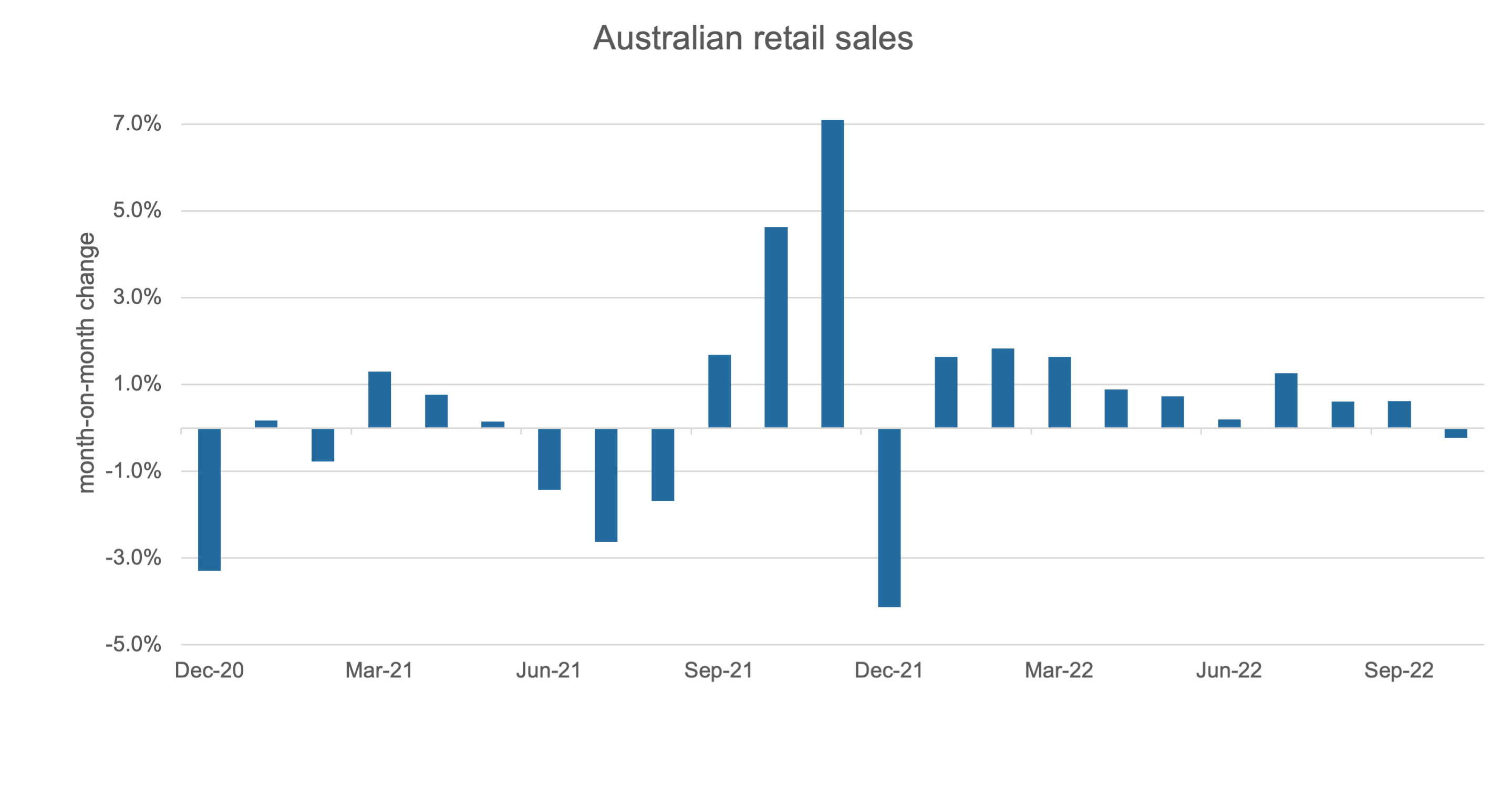RBA end the year with another rate hike
The Reserve Bank of Australia (RBA) increased the cash rate to 3.1% (from 2.85%) at the December meeting, in line with our expectations.
The RBA are trying to achieve a ‘soft landing’ i.e., bring inflation down without causing a recession. However, the path for achieving this has become narrower in recent months. It is a difficult balancing act for the RBA – inflation is still uncomfortably high at 6.9% as of October 2022, and the labour market is still very tight. However, global growth is clearly slowing, and Australian household consumption is also starting to slow.
Key takeaways from RBA’s meeting
1. Inflation is still well above the desired range
The October reading was still well above the RBA’s desired range but did show some signs of decelerating. The below chart shows core inflation for Australia and the decline in the 3-month annualised measure. Whilst we are still some ways from the RBA’s preferred range, this is encouraging – and we expect inflation to continue to come down through 2023.
Source: ABS, Russell Investments, 6 December 2022
2. Labour market is very tight
We are seeing signs that labour demand is cooling. Job ads have been slowing, and the National Australia Bank (NAB) business confidence survey has shown a slowing in hiring intentions. We expect these dynamics to continue through 2023. In addition, the potential for a further increase in migration should alleviate some of the shortages in particular sectors. Wage growth hit a 10 year high in the third quarter, but it’s important to note that it is not yet at a level that would cause the RBA too much concern. In their statement yesterday, they noted that there are no signs of a wage price spiral yet.

Source: Refinitiv Datastream, Russell Investments, 6 December 2022
3. Weakness in the household consumption
The October retail sales print saw an outright contraction, for the first time since COVID restrictions were lifted (as shown in the chart below). Notably, this decrease was seen across most categories including café and restaurant spending, which had been strongly driven by the continued reopening impulse.

Source: Refinitiv Datastream, Russell Investments, 6 December 2022
4. Housing market continues to slow
The rate increases to date are yet to be fully felt by the consumer. As we look ahead to 2023, there is a significant amount of fixed rate mortgages due to expire. Many were fixed when the cash rate was 0.1%. With the cash rate now at 3.1%, the refinancing of those mortgages is going to see a sharp increase in the repayments for those households and will therefore pose a challenge for discretionary spending. The bulk of these mortgages will be expiring between April and August.
The bottom line
We believe the market expectations of a peak cash rate above 3.5% is likely too high, given the dynamics within the Australian economy. Australian government bonds are now offering significantly lower bond yields than the U.S., but still look attractive on a stand-alone basis. We expect the Australian economy to slow next year, given both the domestic and global dynamics – but we believe the risk of a local recession is lower than the risks overseas.